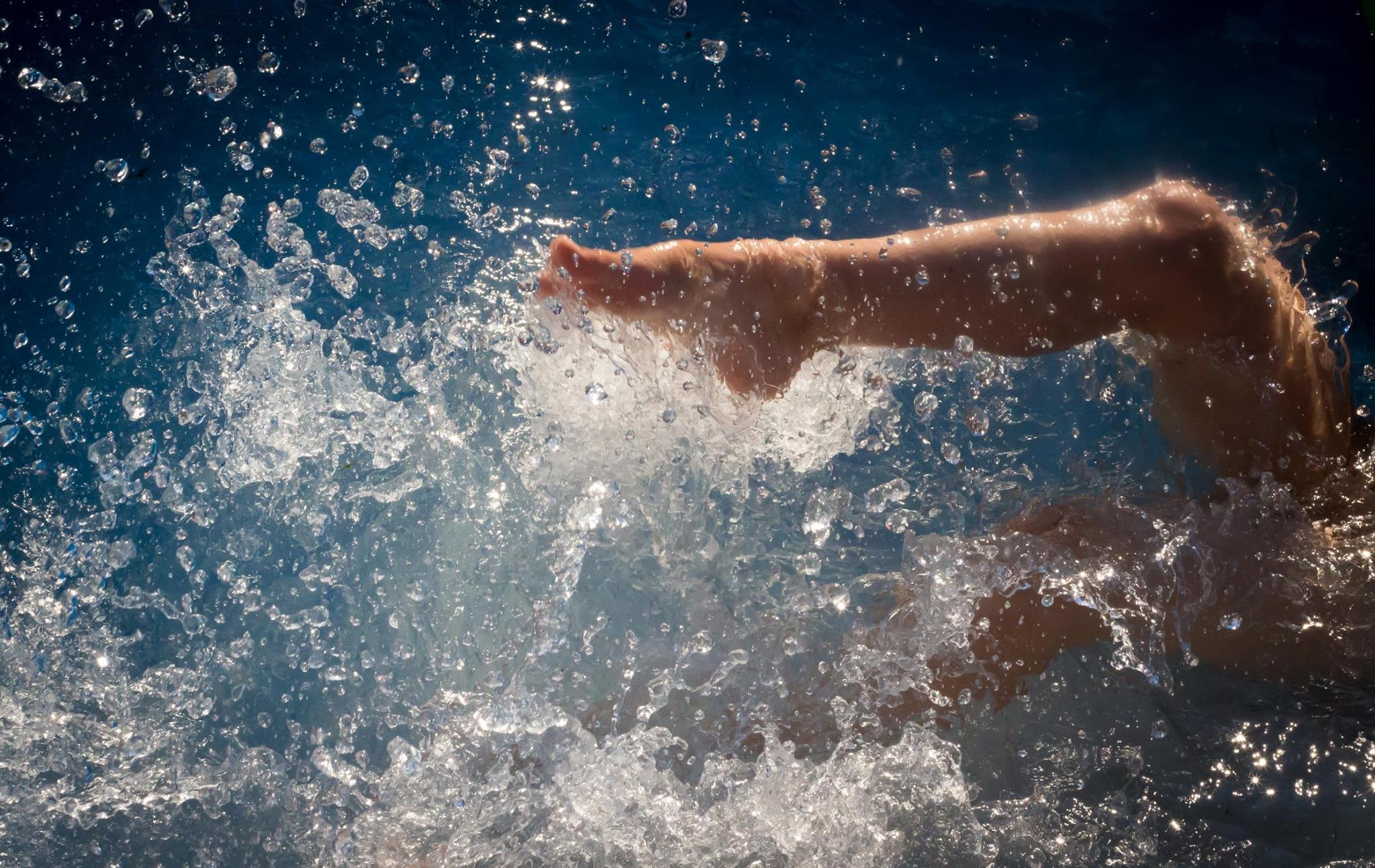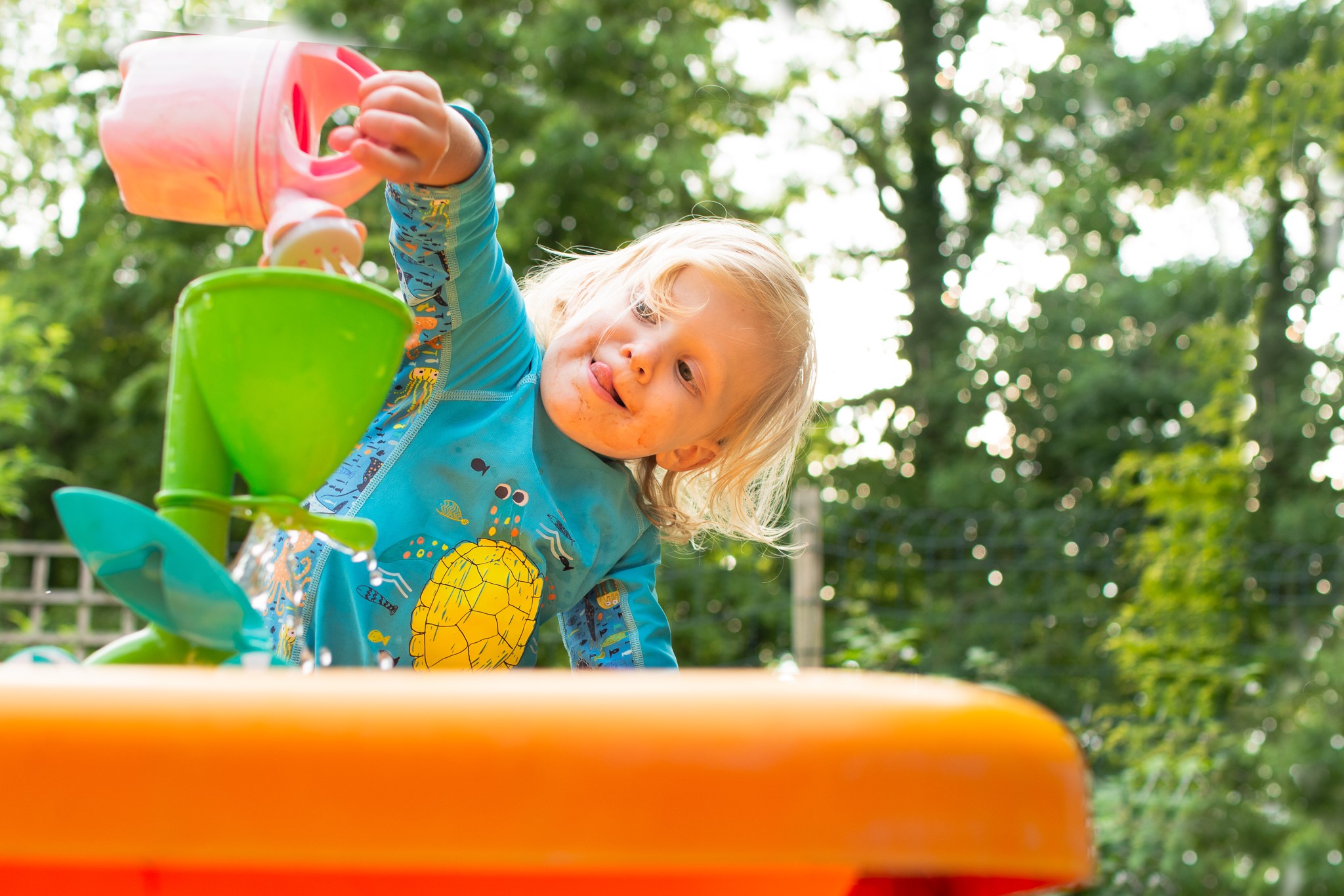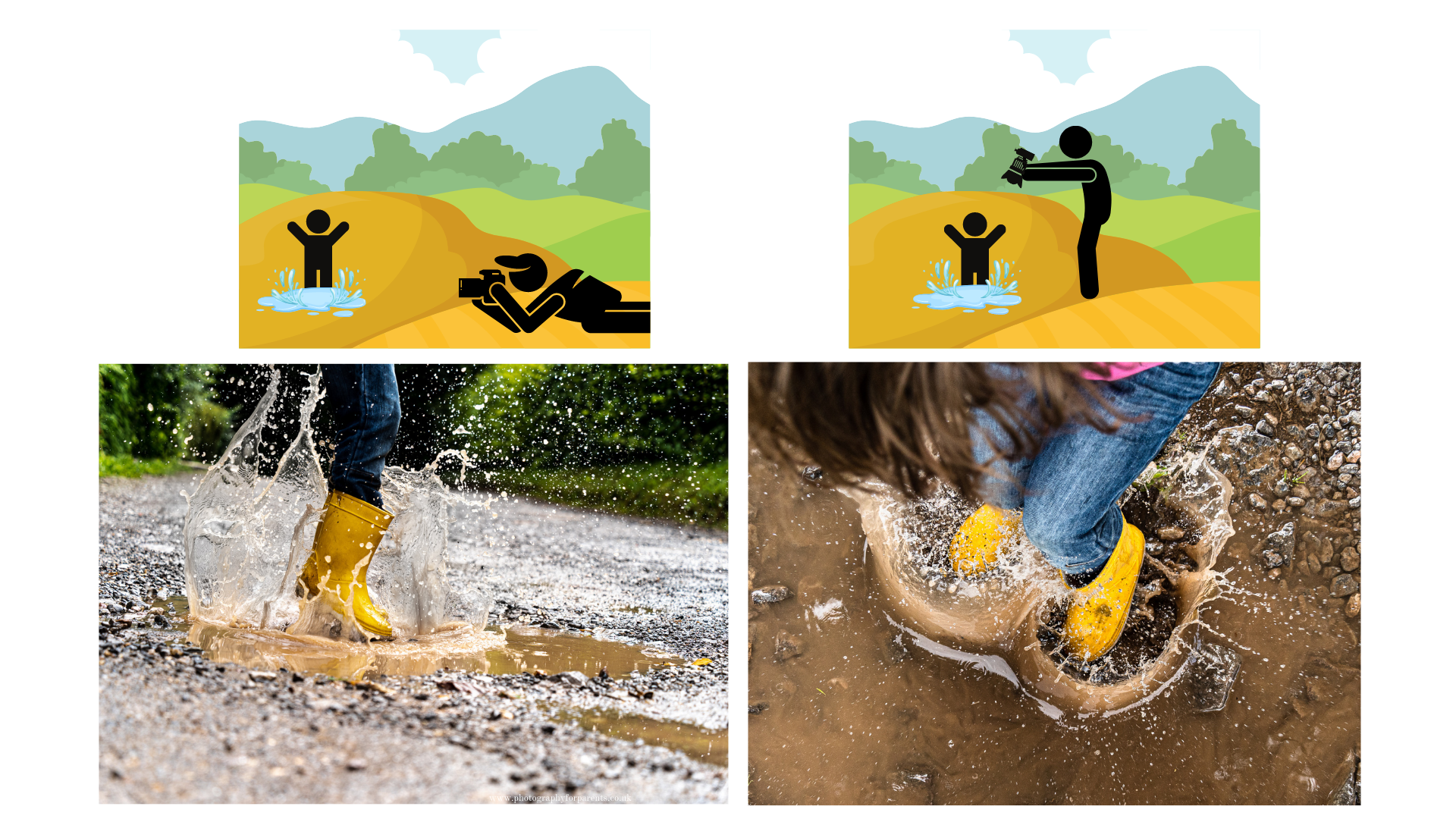Now that you have the general idea on how to approach photographing water, let's talk about specific examples/
Sprinklers
My kids cannot wait till its warm enough for the opportunity of some sprinkler related fun. I was so grateful for the warm spell in lockdown which allowed us to start the sprinkler season early!
My top tips for capturing sprinklers :
- MOST IMPORTANT : make sure to position yourself with the sun in front of you or on your side, never behind you - this will make your water really stand out and make it shine. It works best if you can take the photos when the sun is relatively low so morning or late afternoon. The last hour before sunset will be the prettiest!
- fast shutter - if your shutter is too slow, rather than little round droplets, you'll record lots of little lines as your camera will record a journey of the droplets through time and space. That doesn't necessarily mean bad, but can be distracting at times.
- Pay attention to your background - if you shoot water against a bright sky, you are unlikely to see much of it (water I mean) - anything darker - a hedge, a building, etc will make a difference.
- Use a longer lens / zoom in from a safe distance, rather than getting too close to the action - it's for everyone's safety, but especially your camera's. But also, it allows you to create more compression in the space between you and your subject and you might be able to catch some of the droplets sharp and some dreamily defocused and blown up like gorgeous little drops of light.
- Vary your composition - it's tempting to find a good angle and just stick with it, but challenge yourself to try at least 2 or 3 different compositions - go for more zoomed in detail, shoot from a very low angle shooting up, go extra wide angle to fit more of the environment and the action in.
- Protect your camera - if I expect I might get caught out in the sprinkler action, I put a plastic bag over my camera and lens to protect it. There are purpose made options ( camera sleeve) but I don't often have it to hand
- By the way, same principles apply for splash park or floor fountains or slip-and-slide!

Focusing woes
If we're talking sprinklers, we're talking something that often actively ends up being in front of or around your children which means that your camera may struggle a bit with where to focus.
I'm afraid I haven't got a magic bullet here. There are a few different approaches, but it will depend on how much you want to be fiddling with your camera and how precise you want your images to be.
Option 1: ( this is what I do)
Keep your camera on auto-focus, preferably with continuous focus / tracking focus activated ( this is the option where your camera holds the focus on your subject as they move around).
If your camera has it - turn on the face and / or eye detection because that way the camera will always prioritise the human over the water.
If you can, switch from multipoint / wide focus AREA mode to a zone/ group mode so that your camera knows to hunt focus in one place only rather than all over the frame. Single focus can work too, but I find I have a higher hits to misses rate with zone focusing.
But also - you will have hits and misses and that simply is just inevitable. Sorry!

Option 2: ( works best if you have a predictable spot where you expect the kids to be)
Switch to a static focus and pre-focus it somewhere you want your kids to be - the actual sprinkler itself may be a good point if you expect your kids to be jumping through it. Again, you need to make peace with some of the shots being missed, but as long as you shoot primarely into the same point and press your shutter as your kids hop over the water, you should get some gems too.
Option 3: (If you're quick and brave - I'm not!)
If you're quick and brave - manual focus. It's all ( literally) in your hands. I wouldn't recommend it unless you are genuinely comfortable with manual focus techniques, but if all else fails...

Photo by Kerry Anderson

Photo by Lisa Godfrey

Photo By Caroline Amer
Paddling pool and water play
If your kids are having a more gentle, less frantic play in a paddling pool or around a water table, you have more time to get yourself set up for shots.
I'd recommend going for a mixture of storytelling shots - showing more of the space and what's going on, action shots - to focus on all the joy, and detail shots where you focus on the little things the're doing, looking at and exploring.
- For the storytelling shots, either go for short focal lenghts to bring a lot of the background into the shots (remember Focal lengths from our first week in this project? Short Focal length means as little zoom as possible - colloquially speaking. )

Photo by Morgan Wallace
If you're focusing on the action or detail, you may be better off moving back a little and zooming in. This will help blur the background and make your subject stand out more.

Go for the less obvious, tighter crop shots too - especially when put together with the action or wider shots, they tell the full story.


Photo by Michaela Strivens
If your children are playing with any water toys, look for opportunities to frame them with those toys or create a little textural variation blurring some foreground ( through a combination of close proximity, zoom and if you know how to do it - aperture settings) to help introduce a sense of depth.

Puddles ( and other reflective waters)
Let's be British about it, you're far more likely to see this kind of water in Britain in summer that a warm water pool!
And while this may be a bit disappointing, listen, puddles are BRILLIANT for photography! They are like little mirrors reflecting your children and sky and everything around. They create THE best splash crowns. With a little clever work with light direction and angles, you can make them look amazing.
Light direction matters!
Seems like it shouldn't what with all of it coming from above, but unless you're shooting when the sun is just above you, it will make a difference. When you shoot roughly speaking AGAINST the sun ( backlight - remember? ) you will get a lovely reflection of the sky, but your children in it will look a lot more shadowy ( as they're effectively blocking the light). But if you walk around the puddle and shoot from the other side ( with light behind your back ) you will get a much clearer reflection of your subjects.
Please excuse the phone pic but I had to grab the opportunity while the kids obliged!

Photo by Andrea James

Capturing Puddle jumps
I'm sorry, you are going to hate me, but if you want to capture an impressible looking splash crown, you are going to have to get loooooow down. You want to be shooting almost AT THE LEVEL of the puddle and you want to be shooting parallel to the ground. If your camera has a tilted screen, you may get away with crouching, but low down is the way to go.
This is the fun play part - I like to shoot very low down to the ground, almost hovering above the surface of the water. It creates a unique reflective effect at the bottom, but raising it a little will let you fit more of the reflection in. In general low-ish down is better than from the SAS* position.
* SAS- Standard Adult Standing position
Alternatively, for a different angle, you could hold your camera up high and aim it directly down to capture the water crown from above. In this case you want to be standing close to your puddle subject and ideally on something that elevates you above them and shooting at a 90 degrees angle down.

And if you have not had rain recently, you can replicate what my daughters recently came up with when they wanted to do some puddle play but there were no puddles around...

Lesson 3 Challenge
Listen, I know this is not really 'run through sprinklers and jump into a pool' weather but I really really really want you to see the difference that light makes to capturing anything water related. So here is what I want you to do :
Find a way of sending some water up towards the sky - use a sprinkler, hose, watering can, get your kids to kick some water up, jump in the puddles etc - I don't mind what it is, as long as you can capture it from a couple of sides - facing the sun and facing away of the sun, and seeing how a darker background / shadow affects the way it shows!